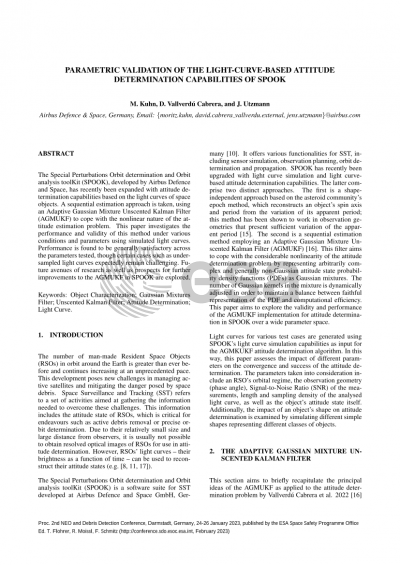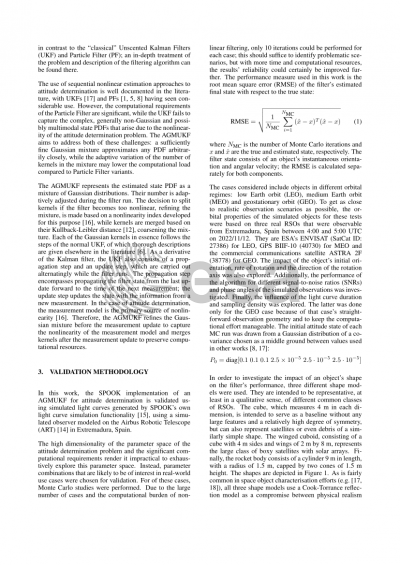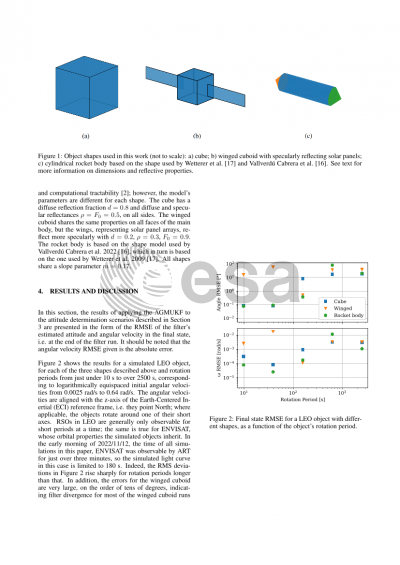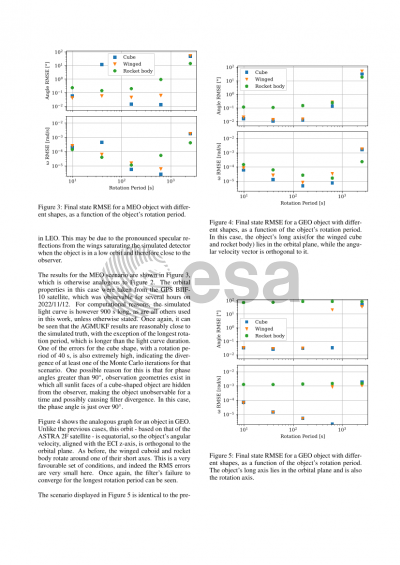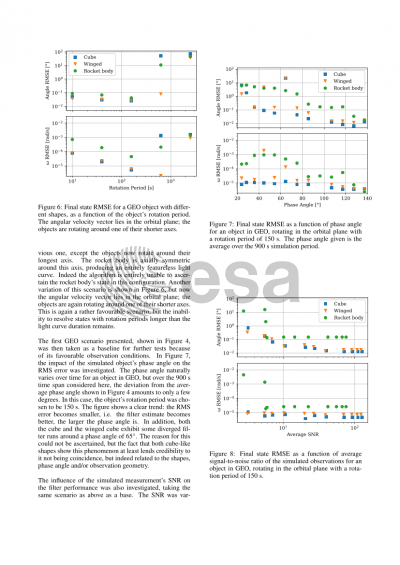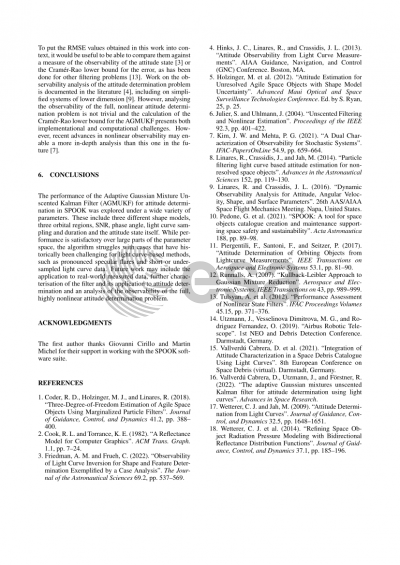Document details

Abstract
The number of man-made Space Objects (RSOs) in orbit around the Earth is greater than ever before and increasing at an unprecedented pace. Space Surveillance and Tracking (SST) activities are aimed at gathering the information needed to manage active satellites and mitigate the danger posed by space debris. This information includes the attitude state of RSOs, which is critical for activities such as active debris removal or precise orbit determination. Due to their relatively small size and large distance from observers, it is usually not possible to obtain resolved images of RSOs for use in attitude determination. However, RSOs’ light curves – their brightness as a function of time – can be used to reconstruct their attitude states.
The Special Perturbations Orbit determination and Orbit analysis toolKit (SPOOK) is a software suite for SST developed at Airbus Defence and Space GmbH, Germany. It offers various functionalities for SST, including sensor simulation, observation planning, orbit determination and propagation. SPOOK has recently been upgraded with light curve simulation and light curve-based attitude determination capabilities. The latter comprise two distinct approaches: a shape-independent approach based on the asteroid community’s epoch method, which reconstructs an object’s spin axis and period from the variation of its apparent period; and a sequential estimation method employing an Adaptive Gaussian Mixture Unscented Kalman Filter (AGMUKF), which aims to represent arbitrarily complex attitude state probability density functions (PDFs) as Gaussian mixtures, dynamically adjusting the number of Gaussian kernels to maintain a balance between faithful representation of the PDF and computational efficiency. This paper aims to explore the validity and performance of these methods over a wide parameter space.
To this end, light curves for various test cases are generated using SPOOK’s light curve simulation capabilities and fed into the attitude determination algorithms. In this way, this paper assesses the impact of different parameters on the observability of the attitude state and on the convergence and success of the attitude determination methods. The parameters taken into consideration include an SO’s orbital regime, observation geometry, Signal-to-Noise Ratio (SNR) of the measurements, length and sampling density of the analysed light curve, as well as the object’s attitude state itself. Additionally, the impact of an object’s shape on attitude determination is examined by simulating different simple shapes representing different classes of objects. In addition to the simulated light curves produced by SPOOK, this paper explores attitude determination from real SO light curves, for example obtained by the Airbus Robotic Telescope (ART) located in Extremadura, Spain.
Preview
